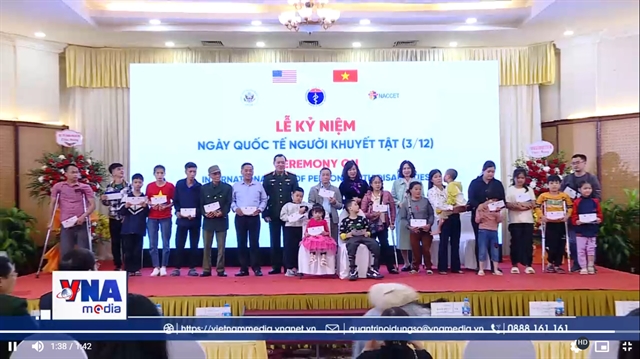 Society
Society
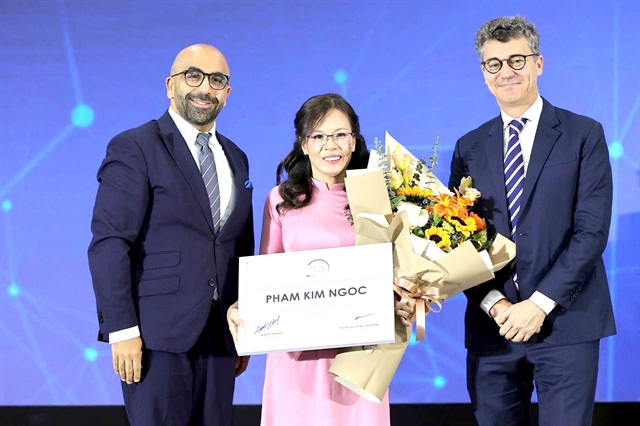
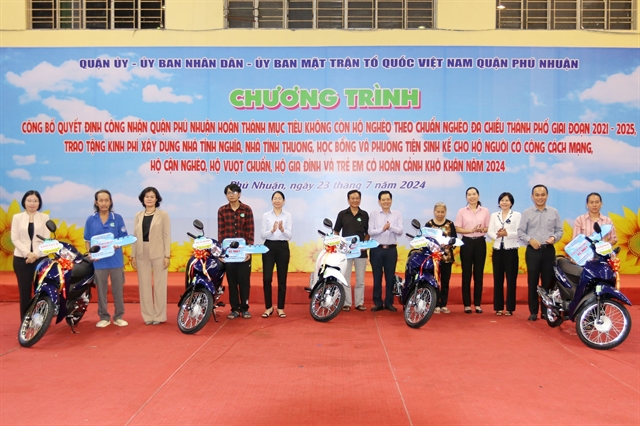 |
| Motorbikes presented to near-poor and disadvantaged households in HCM City’s Phú Nhuận District as a means of livelihood. — VNA/VNS Photo Thanh Vũ |
HCM CITY — Since adopting a sustainable poverty reduction programme using the multidimensional poverty measurement approach, HCM City has not only helped improve residents’ income but also enhanced their overall quality of life.
The city has implemented its sustainable poverty reduction programme for 2021-25 based on the multidimensional poverty measurement – an innovative method aligned with global trends.
Rather than focusing solely on food and clothing, the programme also aims to help people overcome other hardships related to healthcare, education, environment, and more.
The ultimate goal is to ensure the poor can access minimum living standards and essential social services.
Towards comprehensive poverty eradication
In 2009, the city made a significant shift in its poverty reduction policies by introducing the multidimensional poverty approach, an emerging concept that had already been adopted by several countries worldwide.
In addition to income criteria, the city placed emphasis on other living condition indicators such as education, healthcare, housing, environment, and cultural access.
Phạm Thị Thu Hạnh, a resident in District 5, every morning pushes her bread cart to a street corner on Lê Hồng Phong to make a living.
At noon and in the evening, she sells sugarcane juice and other beverages.
Thanks to her hard work, her family’s life has gradually improved.
Once among the most disadvantaged households in the ward - she sold bread on the street while raising school-aged children – Hạnh received various forms of support from local authorities, including scholarships for her children, health insurance cards, and holiday gifts.
In 2021, she was introduced to a poverty-reduction loan and gifted a new bread cart.
She also attended a training course on effective small business practices.
With that knowledge and confidence, she expanded her offerings, increased family income, and stabilised her life. Her children are now in university.
Bình Chánh District’s Vietnam Fatherland Front launched the programme “Livelihoods for a Sustainable Future” in 2016, helping hundreds of households gain tools for income generation and gradually escape poverty.
One such case is Lan, who previously had no land or stable job, and whose children’s schooling was in jeopardy. In 2018, thanks to funding from businesses, the district Fatherland Front presented Lan with a sewing machine.
“With it, I started taking garment jobs from local shops and repairing clothes for neighbours. That helped us generate a stable income,” she said.
Her husband also found work at a small company, and they managed to save a little.
By early 2025, her family had renovated their home, replacing a dilapidated metal-roof shack with a solid house, and her children were attending school regularly.
Many local households have also benefited from similar support.
The district’s livelihood support programme follows a straightforward process from planning and surveying to selecting suitable beneficiaries and supervising use.
As a result, nearly 84 per cent of households made effective use of their support.
Over the years, various agencies and organisations in the district have launched initiatives to help poor and near-poor households, such as Women’s Union’s campaigns encouraging families to create their own capital sources and improve household incomes.
According to the city’s Steering Committee for Sustainable Poverty Reduction, the programme's guiding principle is “substantial poverty reduction and sustainable poverty alleviation.”
At the beginning of 2021-25, the city had more than 58,000 poor and near-poor households, accounting for 2.3 per cent of the total households.
The city has implemented various programmes and policies targeting these groups, including production and business development, livelihood diversification, micro-loans, vocational training, job placement (domestic and overseas), nutritional support, education assistance, and housing support.
.jpg) |
| Financial support provided for building gratitude houses and charity homes for families with meritorious service to the nation in HCM City’s Phú Nhuận District. — VNA/VNS Photo Thanh Vũ |
Changing mindsets among the poor
By the end of 2024, Huỳnh Văn Beo in Bình Thạnh District voluntarily applied to be removed from the poverty list.
Once classified as poor, his family of six gradually improved their situation thanks to preferential loans and a motorbike donation that allowed them to make a living.
“Our income is stable now, and the house has been renovated. I wanted to give this opportunity to others who need it more,” he said.
His family was among 122 in the district who voluntarily exited the city’s poverty reduction programme by late 2024.
The district was recognised as having no poor households under the city’s multidimensional poverty standard one year ahead of schedule.
To achieve this result, the district launched various welfare programmes for poor and near-poor households, such as providing health insurance, job placement, vocational counseling, tuition waivers, housing repair assistance, micro-loans, and COVID-19 support packages.
Many other districts in the city have now met the target of eliminating poverty according to the city's 2021-25 multidimensional poverty standard.
Nguyễn Thị Hồng Hà, chief of the Office of the city's Steering Committee for Sustainable Poverty Reduction, said that during this period, the city reduced 69,914 poor and near-poor households, accounting for 2.7 per cent of all households.
Thirteen districts have now achieved the poverty-free target, with the remaining nine expected to follow by the first quarter of this year.
Notably, one of the programme’s key achievements has been changing perceptions among the poor. More households are moving away from dependency and passivity, instead focusing on education, vocational training, employment, and entrepreneurship.
Their willingness to overcome hardship, combined with support from individuals, organisations, and businesses, has helped the city reach its poverty reduction goals.
Trần Thị Diệu Thúy, vice chairwoman of the city People's Committee, said in the coming years, the city will continue implementing sustainable poverty reduction measures, prevent people from falling back into poverty, and contribute to economic growth and social security.
“The city aims to help poor and near-poor households increase income and access essential social services, including healthcare, education, employment and social insurance, housing, clean water and sanitation, and information,” she said.
By 2030, the city strives to double its local poverty income threshold compared to the national standard, eliminate national-standard poor households, and reduce city-standard poor households to below 0.5 per cent.
The city will continue researching practical solutions to support production and business, create favourable conditions, and provide opportunities for the poor to live independently and confidently, advancing from poverty to prosperity, and contribute to building a “livable, modern, civilised, and compassionate city". — VNS

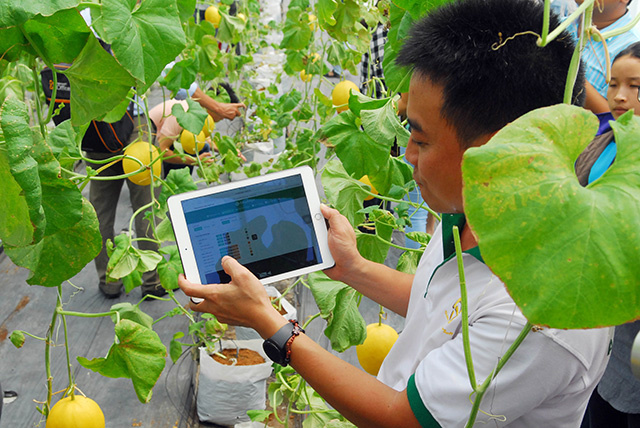
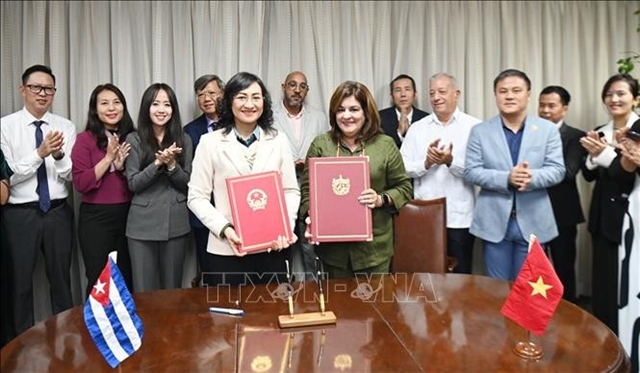
.jpg)
.jpg)